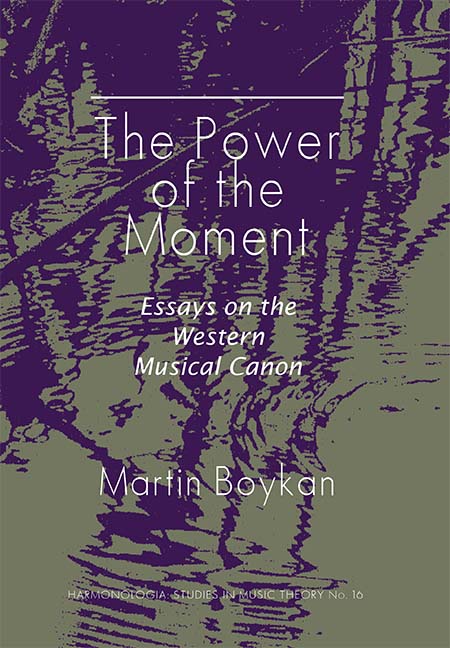Book contents
- Frontmatter
- Contents
- Acknowledgements
- Martin Boykan Biography
- I Introduction: Some Words About Theory
- II The Power of The Moment: The Hammerklavier and the Archduke
- III Voice and Piano in Dialogue: Seven Songs from the Winterreise
- IV A Recurrent Tonality: The Meaning of the Kiss in Verdi's Otello
- V Resetting the Clock: The Scherzo of Beethoven's Fifth
- VI The Power of Every Moment: Musical Continuity in J. S. Bach
- VII Coda
V - Resetting the Clock: The Scherzo of Beethoven's Fifth
- Frontmatter
- Contents
- Acknowledgements
- Martin Boykan Biography
- I Introduction: Some Words About Theory
- II The Power of The Moment: The Hammerklavier and the Archduke
- III Voice and Piano in Dialogue: Seven Songs from the Winterreise
- IV A Recurrent Tonality: The Meaning of the Kiss in Verdi's Otello
- V Resetting the Clock: The Scherzo of Beethoven's Fifth
- VI The Power of Every Moment: Musical Continuity in J. S. Bach
- VII Coda
Summary
Just as the scherzo of Beethoven's Fifth Symphony begins its repeat, a measure is added that totally changes the way we hear it. Ex. 5-1 shows the theme as it appears at the beginning of the movement. Compare it to the recapitulation (Ex. 5-2), and you will notice that the sustained C in m. 236 is a novelty, but since that is the only difference between the two versions, it is not likely to attract much attention. Unlike the interruption in the Hammerklavier Sonata, this event is so ordinary that I doubt that many people notice it in the course of a performance. But the effect is transformative.
There are bound to be consequences when an extra measure is added to a theme, but one must proceed with caution, because at this point in Beethoven's career the quick turnover of bar lines in a scherzo can sometimes make it hard to decide how the measures should be grouped. In later works Beethoven will often provide specific instructions, but different interpretations of the opening of this movement might seem equally plausible. Although the slur that arches across the theme could be consistent with a stress on the downbeat of m.1, or even on the downbeat of m. 3 with the change of harmony, it could also suggest an ambivalent, unaccented performance that would be very suited to this quiet moment. But when the theme is restated in m.9 (Ex. 5-3), the problem disappears. It is tempting to speculate that the sforzando D of m.13 was specifically added to clarify the meter; by picking up the D two measures earlier it obviously defines mm. 13-14 as a two-measure group with strong-weak accentuation that is immediately confirmed by the slurring of mm.15-18 (repeated from mm. 5-8). A metrical pattern like this has a very physical presence and it tends to perpetuate itself unless something in the music obliges us to reconsider. Since m.17 is a strong measure, we expect m.19 also to be a strong measure, and the sudden fortissimo entrance of the horns on that downbeat is certainly more than enough to satisfy our expectation.
- Type
- Chapter
- Information
- The Power of the MomentEssays on the Western Musical Canon, pp. 81 - 92Publisher: Boydell & BrewerPrint publication year: 2011



